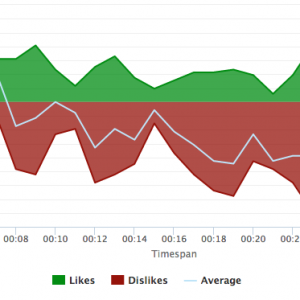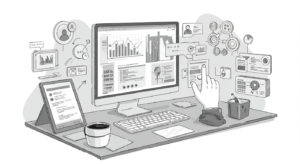Unlocking the Power of Shopper Insights to Drive Successful Business Strategies

In today’s highly competitive business environment, companies need to develop customer-centric strategies to stay ahead of their competitors. That’s where shopper insights come in. Understanding shopper behavior, preferences, and needs can help businesses make informed decisions about marketing, sales, and customer service. This article will provide an in-depth overview of shopper insights and how businesses can leverage them to enhance customer experience and drive revenue growth.
Understanding Shopper Insights
What are Shopper Insights?
Shopper insights are the data and information that businesses collect about their customers’ shopping behaviors and preferences. These insights can be used to develop business strategies that align with shopper needs, improve customer engagement, and drive revenue growth.
For instance, a business can use shopper insights to identify the most popular products and services among their customers. This information can be used to optimize their inventory and ensure that they always have the most in-demand products in stock. Additionally, shopper insights can help businesses identify areas where they can improve their services to meet the needs of their customers.
The Importance of Shopper Insights in Today’s Market
In today’s hyperconnected digital world, shoppers have become more empowered and informed than ever before. They have access to a wealth of information about products and services, and they use this information to make informed purchase decisions. For businesses to succeed in this environment, they need to understand what drives shopper behavior and adapt their strategies accordingly.
Shopper insights are crucial in helping businesses stay ahead of the curve and anticipate consumer needs. For example, if a business notices a trend of customers purchasing eco-friendly products, they can adjust their inventory to include more sustainable options. This not only meets the needs of their customers but also positions the business as a socially responsible entity.
Key Components of Effective Shopper Insights
Effective shopper insights should provide a comprehensive understanding of shopper behavior, preferences, and needs. This includes data about their shopping habits, preferred products and brands, and their level of satisfaction with the shopping experience. It is also important to gather insights about customer demographics, including age, gender, income level, and geographic location, as these factors can influence their shopping behavior and preferences.
However, effective shopper insights go beyond just collecting data. It is important to analyze this data and draw meaningful insights that can inform business decisions. This requires the use of advanced analytics tools and techniques to identify patterns and trends in the data.
Furthermore, effective shopper insights should be actionable. The insights gathered should be used to develop strategies that improve the customer experience and drive revenue growth. For instance, a business can use shopper insights to identify areas where they can improve their customer service, such as by offering personalized recommendations or providing faster delivery options.
Gathering and Analyzing Shopper Data
Primary and Secondary Data Sources
Businesses can gather shopper insights through a variety of primary and secondary data sources. Primary sources include surveys, focus groups, and in-store observations, while secondary sources include data gathered from social media and other online platforms. The key is to identify the most relevant data sources for your business and ensure that the data is accurate and up-to-date.
Surveys are a popular method for gathering primary data. They can be conducted in-store or online and can be used to gather information about shopper preferences, behaviors, and demographics. Focus groups are another primary data source that can provide valuable insights into shopper attitudes and opinions. In-store observations can also be a powerful tool for gathering primary data, allowing businesses to observe shopper behavior and make real-time adjustments to improve the shopping experience.
Secondary data sources can also provide valuable insights into shopper behavior. Social media platforms such as Facebook, Twitter, and Instagram can be used to gather information about shopper preferences and behaviors. Google Analytics is another valuable tool that can be used to track website traffic and gather data about shopper behavior online.
Leveraging Technology for Data Collection
Technology has made it easier than ever for businesses to gather and analyze shopper data. Retailers can use mobile apps, websites, and social media to gather insights about shoppers’ preferences and behaviors. Mobile apps can be used to gather data about shoppers’ location, allowing businesses to target promotions and offers based on their proximity to a store. Websites can be used to gather data about shopper behavior online, such as which pages they visit and how long they stay on a page. Social media platforms can be used to gather data about shopper preferences and behaviors, such as which products they like and share.
Data analysis tools can also be used to segment customers by behavior and preferences. This allows businesses to develop targeted marketing strategies that appeal to different segments. For example, a retailer might use data analysis tools to identify a group of shoppers who frequently purchase organic food products. They could then develop targeted promotions and offers that appeal specifically to this group, such as discounts on organic produce or free samples of new organic products.
Analyzing Data for Actionable Insights
Analyzing shopper data is essential for identifying key trends, opportunities, and challenges. This involves using data analysis tools to extract meaningful insights that can be used to drive business decisions. For example, a retailer might use data analysis tools to identify a trend of shoppers purchasing more eco-friendly products. This insight could be used to inform product development decisions, such as increasing the selection of eco-friendly products in-store.
Analyzing data also involves identifying patterns in shopper behavior and preferences that can be used to improve the shopping experience and drive revenue growth. For example, a retailer might use data analysis tools to identify a group of shoppers who frequently purchase products online but rarely visit the physical store. This insight could be used to develop targeted promotions and offers that encourage these shoppers to visit the store and make purchases in-person.
In conclusion, gathering and analyzing shopper data is essential for businesses that want to stay competitive and meet the evolving needs of their customers. By leveraging a variety of primary and secondary data sources and using technology and data analysis tools, businesses can gather valuable insights that can be used to drive business decisions and improve the shopping experience for their customers.
Turning Insights into Business Strategies
Businesses today are constantly looking for ways to improve their operations and increase their revenue. One way to achieve this is by gathering and analyzing shopper insights. Shopper insights are data-driven insights that provide businesses with a better understanding of their customers, their behavior, and their preferences. By using these insights, businesses can develop effective strategies that align with shopper needs and ultimately, drive growth.
Identifying Opportunities and Challenges
Once businesses like Spot Trender have gathered and analyzed shopper insights, they can use this information to identify opportunities and challenges in the market. This involves identifying gaps in the market, understanding customer pain points, and assessing industry trends and developments. By identifying these opportunities and challenges, businesses can develop strategies that address them and gain a competitive advantage.
Aligning Business Goals with Shopper Needs
Effective shopper insights can help businesses align their goals with shopper needs. This involves developing strategies that focus on enhancing the shopping experience, improving product quality and selection, and offering promotions and discounts that align with customer preferences and budgets.
For instance, if a business discovers that its customers are looking for more personalized experiences, they can develop a strategy to offer personalized recommendations and promotions based on their shopping behavior and preferences. This can help build customer loyalty and increase sales.
Developing Targeted Marketing and Sales Strategies
One of the key benefits of shopper insights is the ability to develop targeted marketing and sales strategies that appeal to different customer segments. This involves using insights about shopper behavior and preferences to develop campaigns that resonate with specific demographics, interests, and needs. This can help businesses increase customer engagement, drive brand loyalty, and ultimately, grow revenue.
For example, if a business discovers that a particular demographic prefers to shop online, they can develop an online marketing campaign that targets this demographic. This can help the business increase its online sales and grow its customer base.
In conclusion, shopper insights are an invaluable tool for businesses looking to improve their operations and increase their revenue. By gathering and analyzing these insights, businesses can identify opportunities and challenges, align their goals with shopper needs, and develop targeted marketing and sales strategies that resonate with their customers.
Implementing Shopper-Centric Initiatives
As businesses strive to remain competitive in today’s ever-changing retail landscape, it’s becoming increasingly important to focus on shopper-centric initiatives. By putting the needs and preferences of shoppers at the forefront of their business strategies, companies can build stronger customer relationships, foster brand loyalty, and drive revenue growth. In this article, we’ll explore some of the key ways that businesses can implement shopper-centric initiatives to enhance the overall shopping experience for their customers.
Enhancing In-Store Experience
One of the most effective ways to improve the in-store experience is to leverage shopper insights to identify areas for improvement. By analyzing customer behavior and preferences, businesses can gain valuable insights into what shoppers are looking for when they visit their stores. This can include everything from the layout and design of the store, to the product displays and signage, to the availability of customer service representatives.
Once businesses have identified areas for improvement, they can take steps to enhance the in-store experience. This might include redesigning the store layout to make it more intuitive and easy to navigate, improving product displays to make it easier for shoppers to find what they’re looking for, and offering personalized recommendations based on individual shopper preferences.
Another key element of enhancing the in-store experience is providing exceptional customer service. This involves training staff to be knowledgeable about the products and services they offer, and empowering them to provide personalized recommendations and assistance to shoppers. By providing a seamless and enjoyable shopping experience, businesses can build brand loyalty, foster repeat business, and ultimately drive revenue growth.
Personalizing Online Shopping Journeys
In addition to enhancing the in-store experience, businesses can also use shopper insights to personalize the online shopping journey. This involves using data analysis tools to segment customers by behavior, preferences and tailoring the online shopping experience to their unique needs and interests.
Personalization can take many forms, including targeted product recommendations, customized promotions and discounts, and personalized messaging that resonates with customer needs. By providing a personalized online shopping experience, businesses can improve customer satisfaction and encourage repeat business.
Building Stronger Customer Relationships
Finally, shopper insights can help businesses build stronger customer relationships by offering personalized experiences that align with their specific needs and interests. By providing exceptional customer service and offering customized products and promotions, businesses can encourage repeat business and foster brand loyalty.
Building strong customer relationships is essential for long-term success in today’s competitive retail landscape. By leveraging shopper insights to provide personalized experiences, businesses can establish long-term relationships with their customers, and ultimately, drive sustainable growth.
In conclusion, implementing shopper-centric initiatives is essential for businesses that want to remain competitive in today’s retail landscape. By enhancing the in-store experience, personalizing online shopping journeys, and building stronger customer relationships, businesses can improve customer satisfaction, foster brand loyalty, and drive revenue growth.








